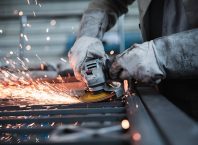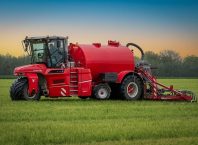Are you looking to maximize revenue for your parts and services? Price optimization is a powerful tool that can help you achieve this goal. It involves gathering data, analyzing the data, creating pricing strategies, monitoring and adjusting prices, and utilizing automation for price optimization. By using these methods, you can ensure that you are charging the optimal amount for your products and services in order to maximize revenue.
In order to effectively optimize prices, it’s important to have an understanding of the market and customer behavior so that you know how much customers are willing to pay for the products or services offered by your business. With this knowledge in hand, you can create pricing strategies tailored to different customer segments or types of products or services. You can also use analytics tools such as machine learning algorithms to make predictions about future demand patterns which will help inform your pricing decisions. Finally, leveraging automation technology can help streamline the process by automatically setting prices based on current market conditions.
Contents
Gathering Data
To optimize parts and services prices to maximize revenue, we need to gather data from all the available sources. This is key in understanding the price elasticity of customers, as well as segmenting them according to their purchasing habits. We can use this data to find out how customers react to changes in pricing structures. Additionally, we can analyze customer segments and determine which one responds best to certain price points. Having this kind of insight allows us to adjust our prices accordingly without sacrificing profits or losing too many customers. Gathering the right data will help us identify opportunities for optimizing our parts and service prices so that we can maximize revenue.
Analyzing the Data
Unpacking the data can give us valuable insights into how we can best adjust our pricing strategy. By carefully examining the figures and identifying any trends, we can start to build a picture of which parts and services are performing well, and which could do better. It’s also important to consider the pricing strategies of our competitors – what kind of offers are they running? Are their prices competitive? By analyzing this data in conjunction with our own figures, we will be able to make more informed decisions about pricing optimization. Finally, once all the data has been examined closely, it is time to draw up an action plan that will maximize revenue for parts and services.
Creating Pricing Strategies
Developing a pricing strategy that will give us the competitive edge can be exhilarating. To maximize revenue with parts and service price optimization, we must first analyze customer segmentation and use strategic bundling to increase our profits. This requires an in-depth look at the data to identify our target market and determine how much they are willing to pay for certain services. By understanding their buying behavior, we can tailor our pricing to each customer segment for maximum impact. We should then bundle our services with discounts or added value so customers feel like they are getting the best deal possible. With this approach, we can create attractive packages for different types of customers while maximizing revenue from parts and service price optimization.
Monitoring and Adjusting Prices
Tracking and adjusting prices is key to keeping our offering competitive and profitable. Price forecasting is an important tool in this endeavor, as it helps us anticipate how changes in the market will affect our pricing decisions. Regularly evaluating competitor pricing also provides insight into how we can better position ourselves in the market to maximize revenue. We must stay on top of these trends or risk losing out on potential sales opportunities. Additionally, by monitoring our competitors’ strategies, we can identify any gaps in their pricing that we may be able to capitalize on. By utilizing price forecasting and competitor analysis together, we are able to optimize our parts and service prices for maximum profitability.
Utilizing Automation for Price Optimization
You can supercharge your pricing strategy by leveraging automation to optimize prices. By utilizing customer segmentation and pricing automation, you can set up a system that takes note of market trends and automatically adjusts prices accordingly. Instead of manually tracking the competition, automation allows you to focus on other areas of your business while still keeping a close eye on the ever-changing market. Automated systems are also capable of quickly reacting to changes in demand or supply which can help you maximize revenue opportunities. Furthermore, automated systems make it easier to create price tiers for different customer segments so that each individual consumer receives a tailored offer suited to their needs. Automation thus makes it possible for businesses to take advantage of dynamic pricing strategies and optimize prices without sacrificing resources or time.












